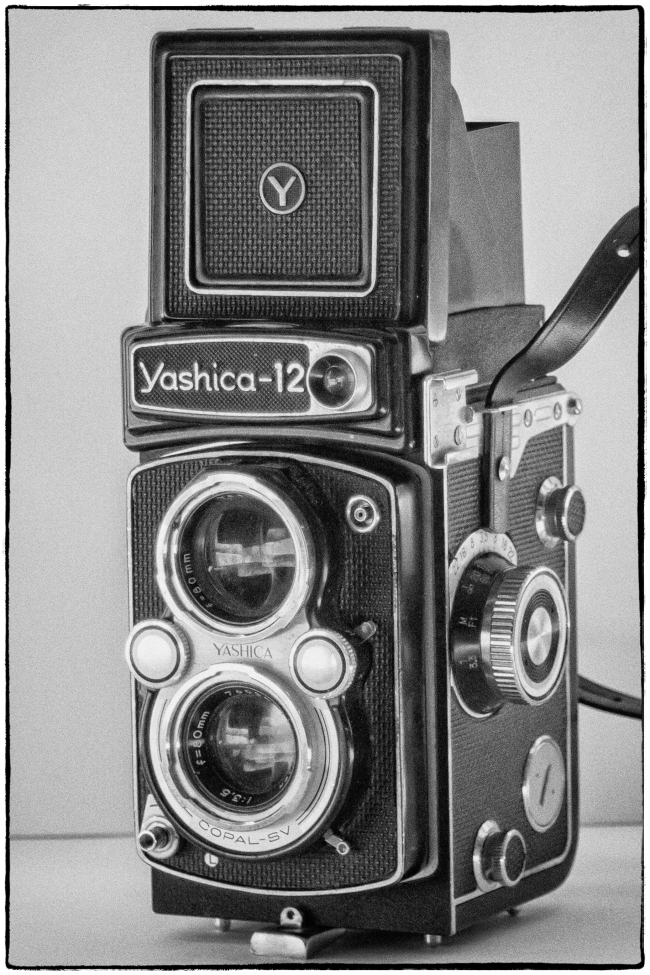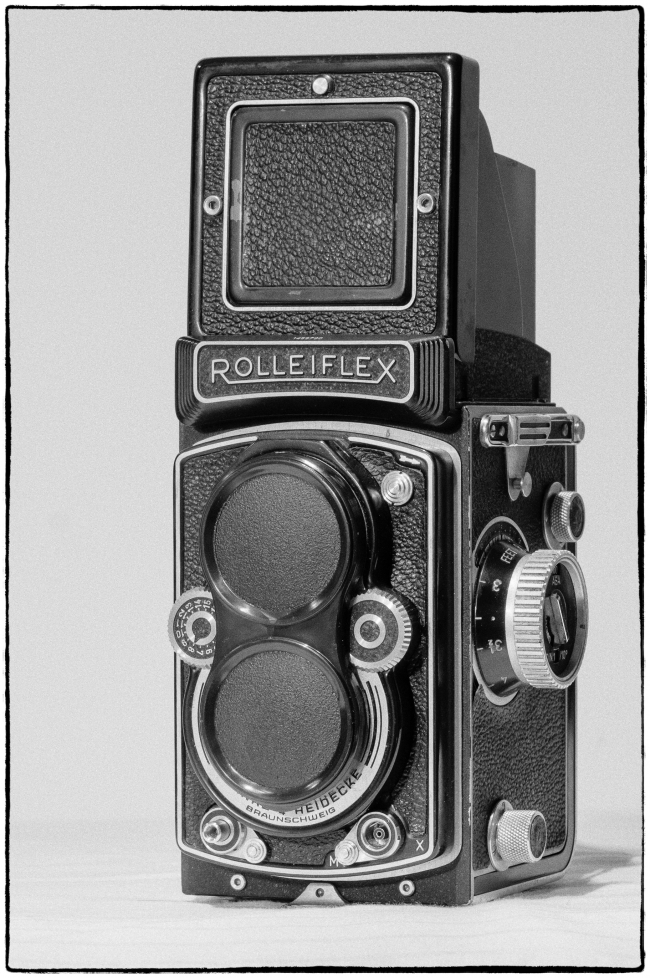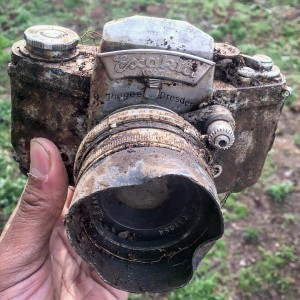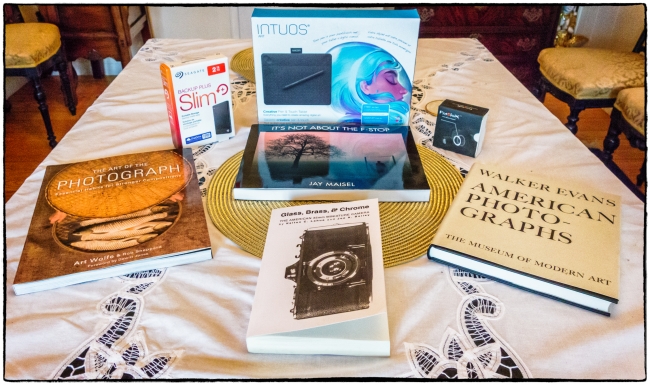Of late I’ve developed an interest in Twin Lens Reflex (TLR) Cameras (above my own Yashica 12 – unfortunately not working because of a stuck shutter. I’ll get it fixed one of these days). A couple of days ago I was browsing around and I came across this very useful resource related the many models produced by Yashica. The Yashica TLR site describes itself as follows:
The first camera made by the fledgling camera maker, Yashima, later to adopt the name of its Yashica cameras, was a twin lens reflex (TLR) taking twelve 6 cm x 6 cm negatives on 120 format film. Like most other Japanese TLRs, it was patterned on the German made Franke & Heidecke Rolleicord and used a separate viewing lens matched to the taking lens below it, the camera front panel moving in and out to achieve correct focus. The view through the waist level finder is very similar to what the taking lens is seeing except that the view is correct side up but reversed left to right, courtesy of the 45 degree mirror (hence “reflex”). Yashica went on to make movie cameras, sub-miniature cameras and various categories of 35 mm cameras and in 1959, it even claimed to be the “largest manufacturer of cameras and photographic products in Japan”, but the offspring of the first model would continue in production for the next 33 years.
This site is dedicated to understanding and preserving the details and development history of the company’s TLR cameras from the first model Pigeonflex introduced in early 1953 through to the Yashica Mat-124G which ended manufacture in 1986:




